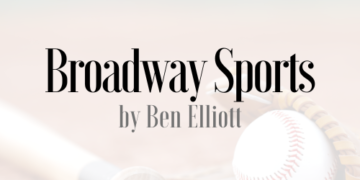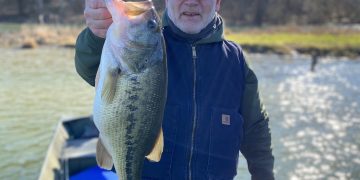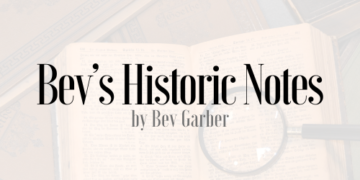“Ecology just means the house, really. The earth is our house, it’s our home, and I want to think about our gardens as our homes. Not just for ourself, but for other living things that are here with us, that maybe we don’t think about as often.”
So began Anna Marie Johnson’s recent talk at the Broadway Village Library, about her book and designing our gardens with native plants.
Having grown up in Iowa, with grandparents who loved everything about nature, probably set her on the path she has traveled, and travels today. Her grandmother was a teacher and taught environmental education, for a time, her grandfather was a caretaker for a park. They instilled in Anna a love for nature, its plants, creatures, and environs.
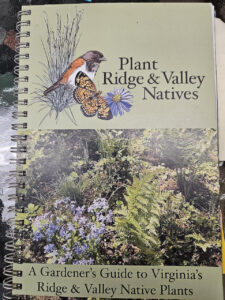
When she and her husband moved here in 2005, she “wanted to really put down roots” (no pun intended) “and gardening seemed to be a good way to do that.”
Anna Marie and her photographer husband, Steven Johnson, truly live the life she speaks about. They have turned their 2 plus acre plot of land into a veritable nature preserve, with native plants, that attract and are beneficial to nature’s other residents- both large and small. Many of the plants we buy from box stores and nurseries, are pretty, but not necessarily native to the area, or beneficial to insects and birds.
Anna is part of the Headwaters Master Naturalists. The state of Virginia offers training “for those who are more interested in learning about the natural world”. Although she does not consider herself a master, she is definitely a knowledgeable “passionate amateur”. She is also connected with the Virginia Native Plant Society, and President of the local Shenandoah chapter. She encourages everyone to join.
Although her day job is teaching writing at JMU, with an MFA in Creative Writing, Anna’s passion really lies within the world of nature and plant life.
Plant Virginia Natives is a statewide organization offering regional plant guides. Our area did not have one, and as Anna said, “The only way to get one is to make one!” That is what she decided to do. She pulled together 20 or 30 folks who were also interested in creating this, and the plant guide was born.
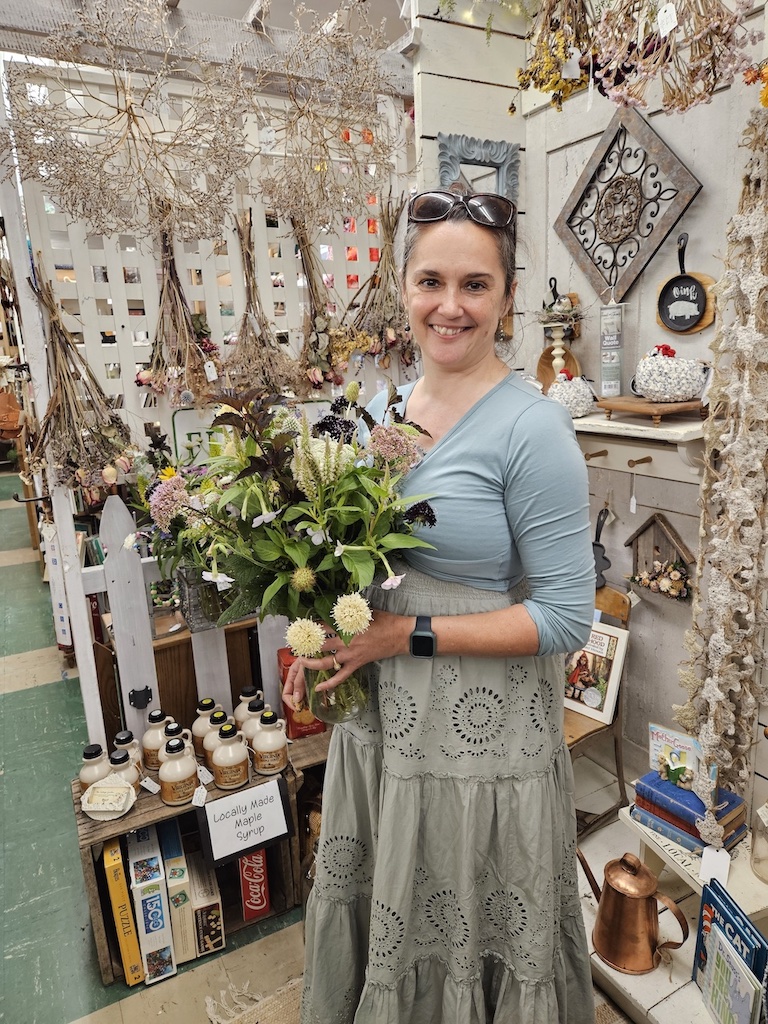
Anna Marie Johnson holding a mixed bouquet from Loretta Pence’s garden
“You want to choose plants that will feed and shelter wildlife, including pollinators. Native plants are also good in improving soil fertility, if they are perennials, you don’t have to keep digging them up and moving them. They help protect clean water, by filtering run-off. We want to re-define beauty. Instead of thinking that beauty is something static, pristine, and never changes, we want to think beauty is healthy. Instead of thinking, oh, this rose is pretty, because it doesn’t have any leaf damage, you want to think, oh, this has leaf damage, so someone has been able to eat that and have a good meal! Not Japanese beetles though!”
Pollinators are more than just butterflies, there are many kinds of bees and wasps, ranging from the common and large to almost miniscule that you rarely notice. There are more than 50 kinds of native bees in Virginia. A rusty patch bumble bee, rarely seen because it is so tiny, is one discovered in one of Steven’s photographs, taken in Bath County. Ants are also pollinators, for example, for wild ginger. Hummingbirds and bats, to name two, are also pollinators.
Mining bees are tiny little bees that make holes in the ground, burrowing in. “They wear their food all over themselves!” Native Spicebush is an important food source for them. Hairy alum root is a native alternative to the commercial coral bells found in nurseries. There is a particular little bee that only uses the alum root. When native plants are gone, so are the living creatures that use only that particular plant to sustain themselves. Diversity in native plants equals diversity in wildlife – large and small, birds and insects.
“Eighty percent of the insects are generalists – they can eat a lot of things, but there are pollinators that are specialists and can only eat from one, or a couple, specific kind of plants. Leaf damage equals habitat for living things.”
There are, of course, invasive plants, that you don’t want in your garden. The term invasive is being used more frequently, as we pay more attention to what we are growing. Kudzu is a very well known, destructive invasive that was imported long ago. As you drive down the highway, you may see evidence of a kudzu invasion, covering trees completely, making it look almost like an alien landscape. There are many plants we may think of as native – including chicory, Queen Anne’s Lace, and dandelions, which are not native, but have naturalized, and have fit in and do serve a purpose. Anna speaks about invasive plants “dominating your gardening space, we want to edit that out. That is why you want to plant native plants, you will be doing a lot of good for many different pollinators. I am not a purist, it’s ok to have some non-native plants. We want to maximize diversity.” She describes setting a garden in a planned manner, or letting it go wild, whatever your preference is in designing your space.
Limit use of pesticides and chemical fertilizers, unless there is absolutely no other option. Run-off gets into our waterways, contaminating it and killing fish. Let bees be. They are very sensitive to pesticides.
In maximizing diversity, Anna describes 4 categories:
Species diversity- different types of plants
Structural diversity – different heights of plants, offering shelter for all types of creatures, from ants to birds.
Functional diversity – useful- different kinds of food and shelter throughout the year- different blooming times
Genetic diversity – maybe the hardest to achieve according to Anna. “A lot of the plants we buy from nurseries are clones of each other, and have been bred to have a specific trait we, as humans, find appealing. Growing from seed will allow a lot more genetic diversity.”
Her recent book, spiral bound Plant Ridge & Valley Natives, A Gardener’s Guide to Virginia’s Ridge and Valley Native Plants, sold out quite quickly, and is now being updated, with an index, 20 new plants, several new sections- including plants with walnut tolerance, how to handle deer in your garden, drought tolerant plants. Hopefully, the goal for the new edition to be out, will be early fall, which is the best time to plant native plants. As she states, people commonly plant in the spring, and that is fine, but planting in the fall allows the plants to establish their root system over the winter months.
The book was put together through teamwork, with many photographers and writers contributing. Anna is the coordinator, everything was completely donated, there was no budget, except for the printing. There were partner non-profit organizations, listed in the book, who donated money in advance to get the book printed. Those people and organizations then received copies of the book in return. They could resell the guides or give them away, their choice. It is printed by the Shenandoah Chapter of The Native Plant Society. The book is available in local libraries. If you wish to read the book before it is reprinted, it is available online in a PDF. This is a guide every gardener, beginning or experienced, will want to have in their library!
Virginia Native Plant Society (VNPS) Shenandoah Chapter
www.VNPS.org to download a free PDF of the book, or order the updated edition when available











